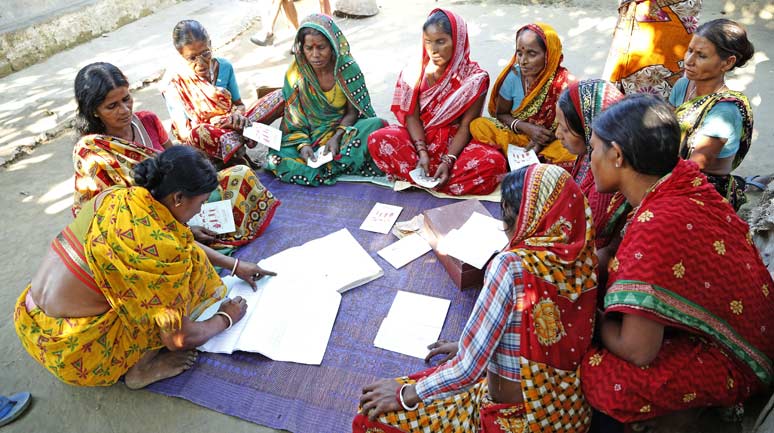Self Help Groups: Empowering Agencies


SHGs are living organizations and need to be allowed to grow organically in response to internally identified needs rather than be directed by outside entities that have the narrow aspirations of economic growth only
Introduction
W OMEN’S SELF-HELP Groups (SHGs) have become the panacea for every problem related to poverty, and the overall well-being in rural India. The formation of SHGs of poor women, and the consequent pumping of credit to these groups, has helped eradicate poverty. Women are believed to be more judicious and are more inclined to think of their family’s needs, and are, therefore, likely to utilize the available funds judiciously.
That women are prudent and take care of their families is true. However, it is difficult to imagine that a structural problem such as poverty can be eradicated only by easy access to credit. Deep-rooted structures of gender, caste, class and religion, which aggravate poverty, can hardly be challenged when SHGs are formed with the purpose of credit delivery alone. Access to credit serves only a tiny part of the big problem. In many cases, it fails as well. However, the SHG credit linkage model is now being replicated all over India and women’s SHGs are being formed and nurtured across the country with an agenda of poverty alleviation through access to credit. Women of rural India can address issues of poverty by accessing credit, along with technical knowledge enhancement, solidarity, participation in politics, etc.
Women of rural India can address issues of poverty by accessing credit, along with technical knowledge enhancement, solidarity, participation in politics, etc.
Having worked in the development sector, I have learned from my experience that SHGs can do wonders if formed with the purpose of solidarity and mutual help, and supported with finance, as per the credit needs of the poor women. However, it is difficult to imagine such groups being effective 3 if formed with a short-lived agenda of credit delivery alone. This was already proved by the implementation of Swarna Jayanti Grameen Swarojgar Yojna (1999–2012). The scheme was, at best, only a moderate success.
Some may argue that several non-governmental organizations (NGOs) in India have successfully established the SHG model as one of the ways to eradicate poverty and of women’s empowerment and, therefore, consider it to be a successful model. This is true if I take the example of PRADAN, one of the leading Indian NGOs. Organizations such as Myrada and Andhra Pradesh Mahila Abhivruddhi Society (APMAS) Society have also worked extensively and established that the women of rural India can address issues of poverty by accessing credit, along with technical knowledge enhancement, solidarity, participation in politics, etc. However, there are many differences between these experiences and those seen when the formation of SHGs has been scaled up to a national level, with the major focus being accessing credit. In the latter process, when the number of SHGs is scaled-up, short-term agendas become the focus; the women, having come together, develop aspirations around monetary gains, without actually assessing their absorption capacity. The potential danger in this approach is that it gets shattered immediately if their aspirations are not fulfilled for any reason. I draw on my experience of over two decades as a PRADAN professional to reflect on factors that make some SHG processes more successful and enduring than others.
Sahana Mishra works with PRADAN as an Integrator and is based in Patna, Bihar


1 Comment
ग्राम,राजमंदिर खुर्द BB Jainab SHG. अध्यछ शाहिदुंनिशा सचिव तबस्सुम कोषाध्यछ रीना ग्राम सभा विकाश कार्य करवाना चाहती हूँ जैसे 1,मनरेगा में मेट शोक पिट बकरी शेड पशु शेड वर्मी कम्पोस्ट sauchayly व् आवास आदि सभी महिला मेम्बर साहिमति बैठक दिनांक 23/02/2021 फीड करवाना चाहती हूँ